Key takeaways
- Calm parenting techniques emphasize patience and composure, creating a peaceful environment for children to express their emotions.
- Practicing calm parenting fosters trust and deeper connections between parent and child, transforming conflicts into meaningful conversations.
- Challenges include maintaining composure in stressful moments and balancing authority with gentleness, requiring constant self-awareness and patience.
- Incorporating calming activities and mindful practices does not only help children relax but also promotes a harmonious atmosphere for the family as a whole.
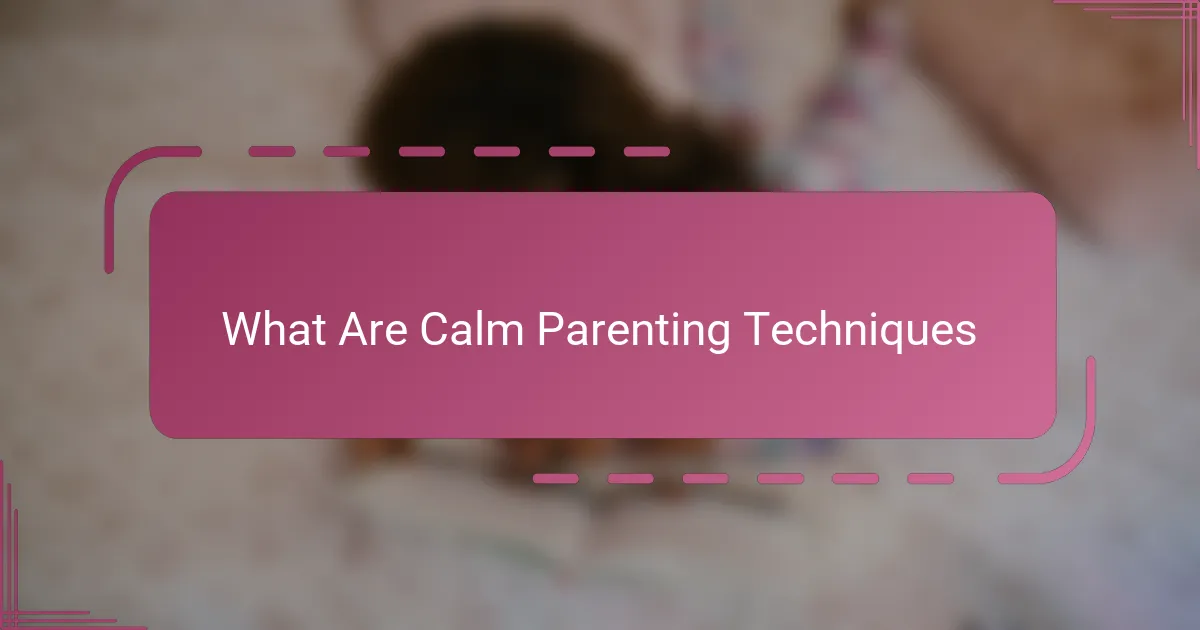
What Are Calm Parenting Techniques
Calm parenting techniques are all about responding to your child with patience and composure, even when things get chaotic. They focus on staying grounded and composed, which helps defuse tense moments rather than escalating them. Have you ever noticed how staying calm yourself can quickly soothe your child’s distress?
In my experience, these techniques revolve around slowing down, taking deep breaths, and choosing words carefully to maintain a peaceful atmosphere. It’s not about ignoring problems or being passive, but rather about creating space to understand your child’s emotions without reacting impulsively. I’ve found that this approach fosters trust and connection, making both of us feel safer and more respected.
Ultimately, calm parenting is a practice that encourages thoughtful responses instead of knee-jerk reactions. It gently reminds me that my own emotional state can set the tone for how my child experiences the world. Can we truly teach peace to our children if we don’t embody it ourselves?
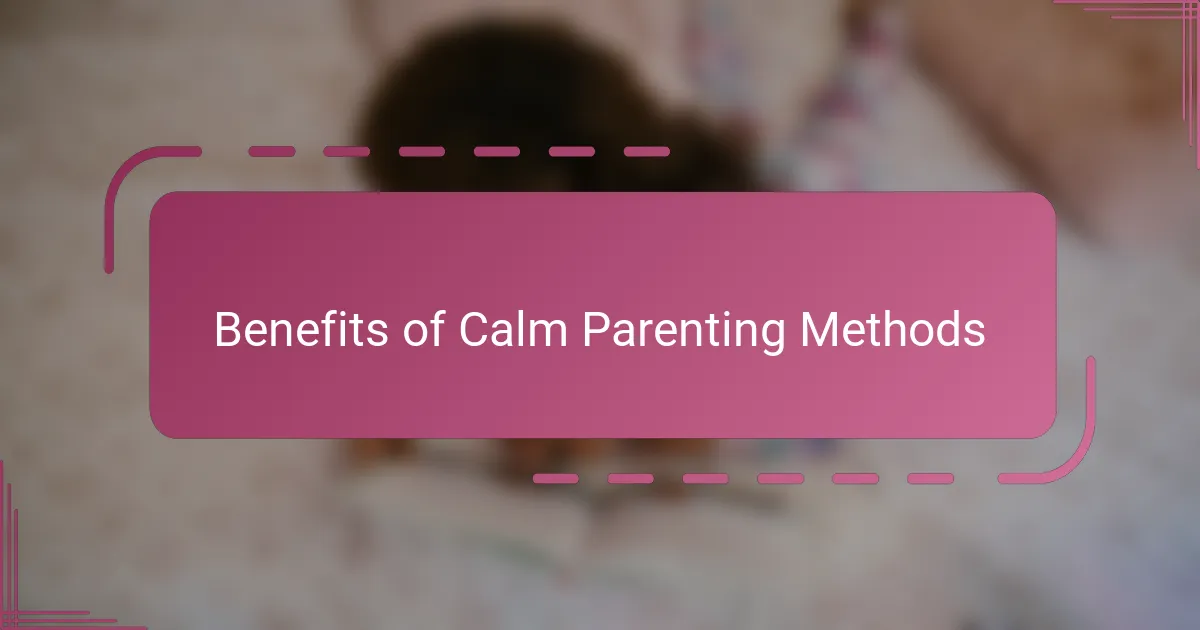
Benefits of Calm Parenting Methods
What really stands out to me about calm parenting is how it transforms tense moments into opportunities for connection. When I consciously slow down and stay steady, I’ve seen my child relax too—it’s like a ripple effect of calm washing over both of us. Doesn’t it feel amazing when patience replaces frustration in those challenging situations?
Another benefit I’ve noticed is how calm parenting builds a foundation of trust. When my child knows I’m not going to lose my cool, they open up more and express their feelings honestly. It’s incredible how just staying composed can make your child feel truly heard and valued—isn’t that the heart of a strong parent-child bond?
Finally, calm methods have helped me grow in ways I never expected. Practicing composure has made me more self-aware and less reactive not only as a parent but in other parts of life too. It’s like nurturing calm in myself creates a peaceful sanctuary for my whole family—who wouldn’t want that kind of harmony at home?

Key Principles of Calm Parenting
One core principle of calm parenting that consistently resonates with me is the importance of mindful presence. When I focus fully on my child without distractions, it feels like our connection deepens naturally. Have you ever noticed how just giving your undivided attention can instantly ease a child’s anxiety?
Another key idea is embracing empathy over judgment. Instead of reacting to challenging behavior with frustration, I try to understand the feelings driving it. This shift in perspective transforms conflicts into meaningful conversations—something I’ve found incredibly powerful in building trust.
Lastly, patience stands at the heart of calm parenting. I remind myself that real change takes time, both for my child and me. By holding space for mistakes and growth, we create a safe environment where learning happens gently and authentically. Isn’t that what every parent hopes for?
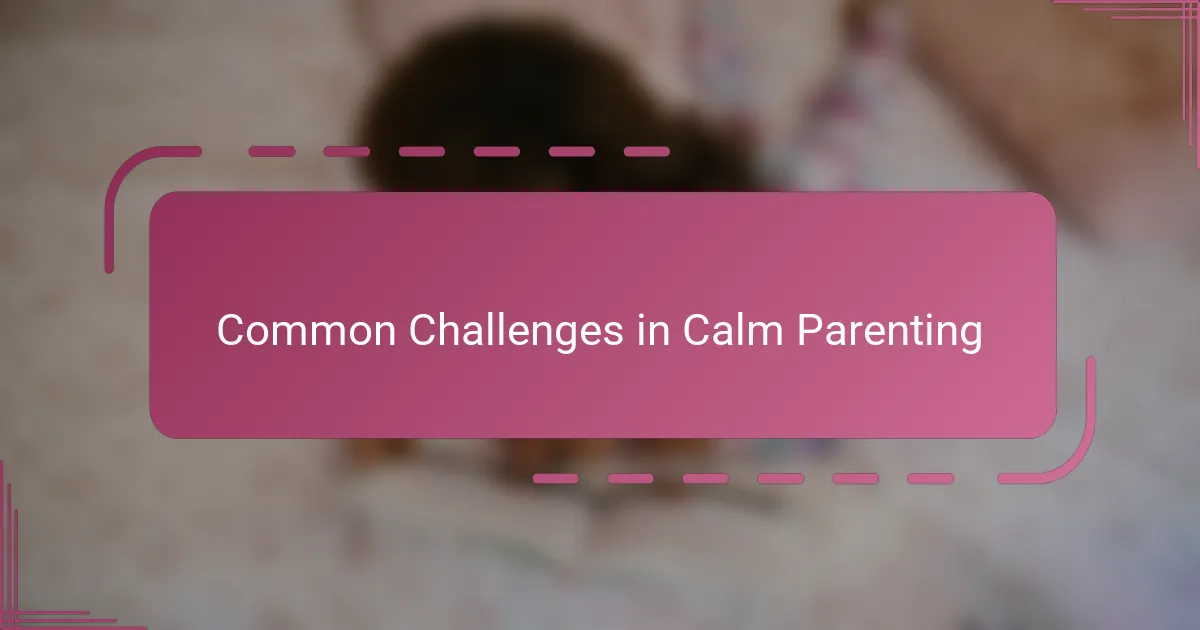
Common Challenges in Calm Parenting
One challenge I often face with calm parenting is staying composed in the heat of the moment. It’s easy to say “stay calm,” but when a toddler throws a tantrum in public, holding that calm feels almost impossible. Have you ever caught yourself reacting before you even had a chance to think? I’ve been there, and it takes practice to pause and breathe instead of snapping.
Sometimes, I worry that being so patient might be mistaken for weakness or lack of authority. Balancing firmness with gentleness isn’t always straightforward. How do you maintain respect without raising your voice? I’ve learned it’s a delicate dance—one that requires constant self-awareness and adjustment.
Another tricky part is managing my own expectations. Calm parenting demands patience not just with my child but with myself. It’s frustrating when progress feels slow or setbacks happen, but I remind myself that this approach is a marathon, not a sprint. Have you noticed how giving yourself grace makes the journey feel more sustainable? I certainly have.
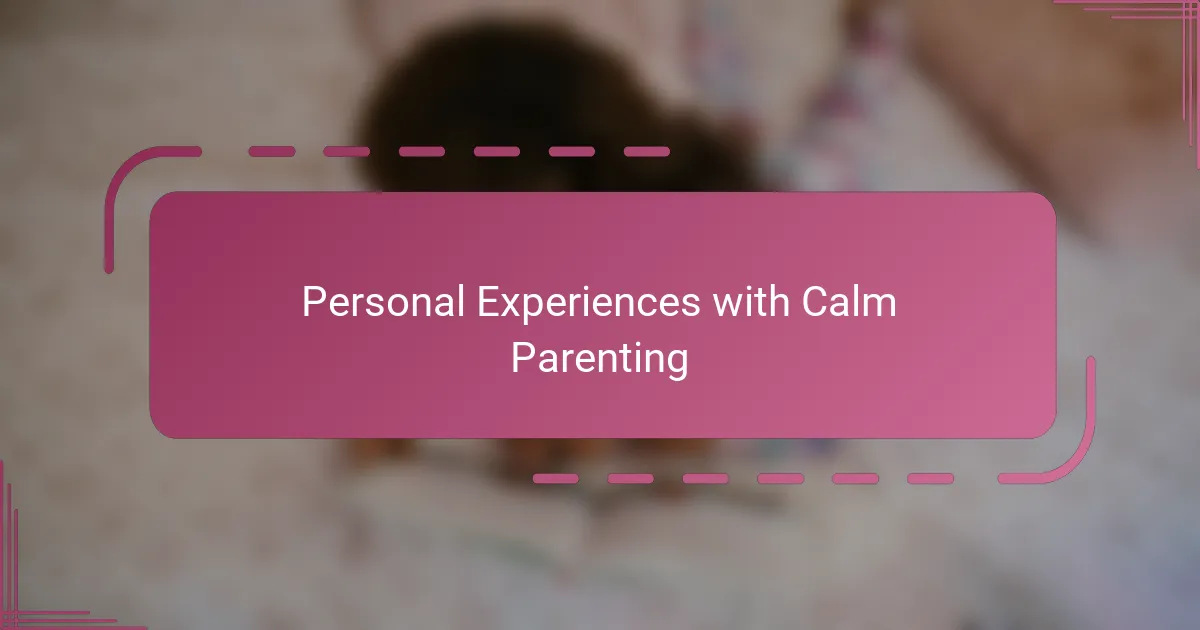
Personal Experiences with Calm Parenting
There was a moment when my child had a meltdown over a broken toy, and instead of reacting with frustration like I used to, I took a deep breath and stayed calm. To my surprise, this simple shift softened the situation, and we ended up talking through their feelings rather than just fixing the toy. Have you ever experienced how a calm response can completely change the mood in the room?
I remember one afternoon when everything seemed to go wrong—spills, tantrums, and tiredness all at once. Instead of spiraling into stress, I reminded myself to pause and listen deeply to my child’s needs. It wasn’t easy, but the peaceful moment we created together afterward made me realize calm parenting isn’t just about technique; it’s about connection.
Sometimes, I still catch myself slipping back into old habits when things get overwhelming, and it’s frustrating. But each time I manage to reconnect through calmness, I learn more about my own triggers and my child’s unique ways of coping. Isn’t growth like this one of the most rewarding parts of parenting?
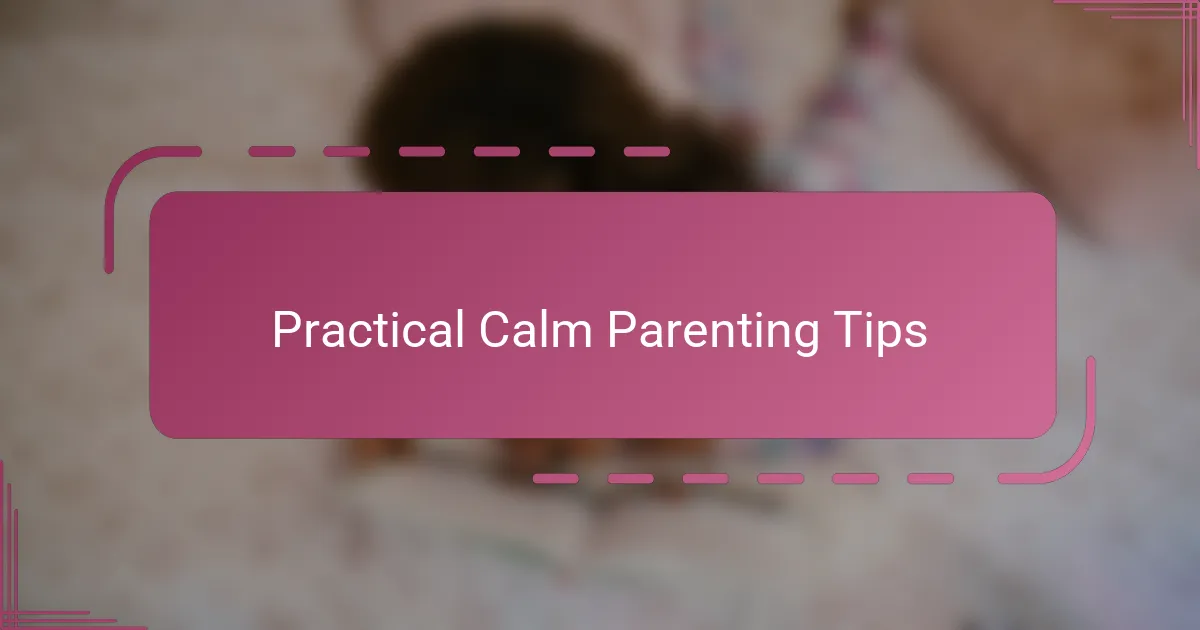
Practical Calm Parenting Tips
One practical tip I rely on is taking a moment to breathe deeply before responding. It sounds simple, but pausing for even a few seconds helps me collect my thoughts and prevents reactions I might regret. Have you noticed how just a brief pause can shift the whole tone of a conversation with your child?
Another strategy I’ve found helpful is using calm, gentle language instead of commands or criticism. Phrases like, “I see you’re upset—let’s figure this out together,” invite cooperation rather than resistance. It’s amazing how much softer the atmosphere becomes when words are chosen with care.
I also make it a point to set small, clear expectations for behavior and follow through consistently but without anger. Maintaining this steady approach takes patience, but over time, I’ve seen my child respond with more respect and understanding. Isn’t it encouraging when calm consistency starts to build mutual trust?
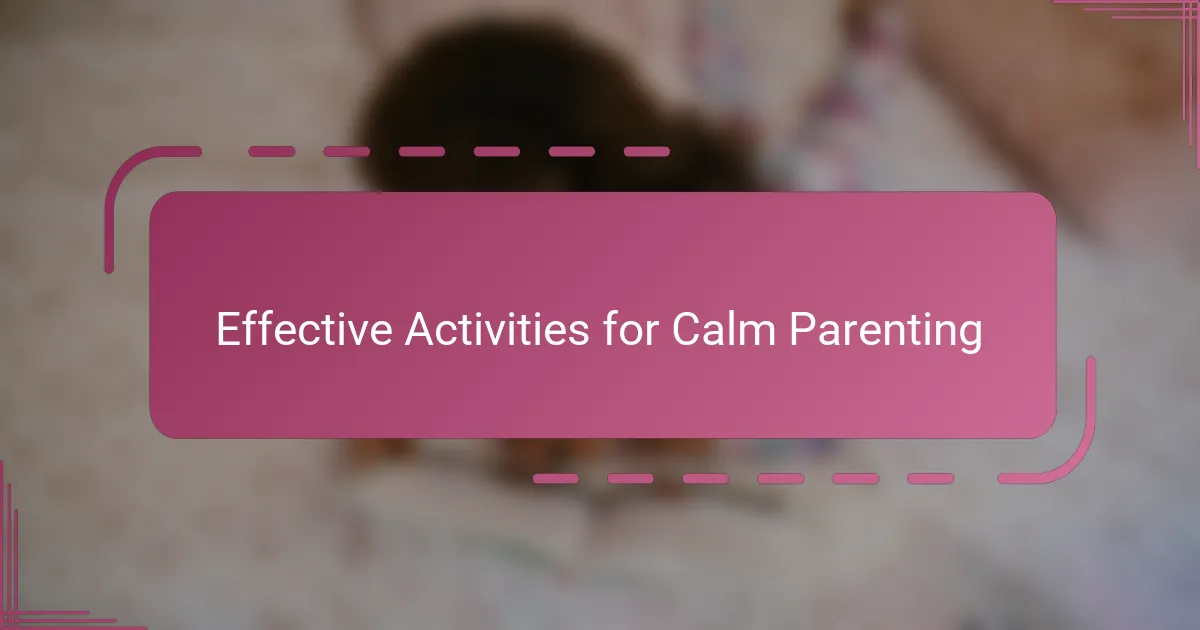
Effective Activities for Calm Parenting
When I first started incorporating calming activities into our daily routine, I noticed how simple moments like mindful breathing or quiet storytelling worked wonders. Have you ever tried just sitting with your child in silence, focusing on your breath together? That shared stillness often feels like hitting the reset button for both of us, calming the storm before it starts.
Another practice that’s become a go-to is gentle movement, like slow stretches or easy yoga poses. It surprised me how much these small, calming motions help release tension—not just for my child but for me too. Have you seen how children mirror our energy? When I move calmly, their bodies and minds tend to follow, creating a peaceful bubble around us.
Finally, I find that creative activities like drawing or playing with clay offer a quiet outlet for emotions. Watching my child pour feelings into art without pressure brings such relief and connection. Isn’t it incredible how expression through creativity can soothe restless minds and build calm, even in the toughest moments?


